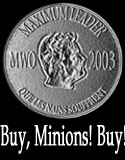I went to the livestock auction last Thursday to buy five calves. I have orders for nine sides of beef and will put one side in the freeze for the Smallholder family. Unfortunately, the veal buyers were out and outbid me on many of the finest calves. Some of the calves went for $140.
I still have a hard time following the rhyme or reason of the prices that different calves fetch. Before the auction, I make a list of calves worth bidding on by:
1) Checking the suck reflex ‚ÄövÑv¨ you want a calf that is so eager to eat that it will suck everything put into his mouth ‚ÄövÑv¨ if he will grab your fingers, he is a potential purchase.
2) Checking the nose ‚ÄövÑv¨ a red nose indicates a cold or sickness.
3) Checking the navel. I wet navel indicates that the calf is only a day old and probably has not had enough colostrums. Colostrum is the first mother‚ÄövÑv¥s milk that jump starts the immune system. Many farmers (particularly those with large operations and many other responsibilities) don‚ÄövÑv¥t take the time to milk out the colostrums and feed it to the calf, just dumping the males at the next auction. I calf that has not had its colostrum will succumb to an infection rather rapidly.
4) Checking the tail ‚ÄövÑv¨ you want to check to see what type of elimination the calf is having. While all calf manure is runny (liquid in, liquid out), you want something with some consistency and color ‚ÄövÑv¨ a clear watery liquid that smells really bad is called ‚ÄövÑv scours.‚ÄövÑvp Scours will dehydrate a calf rather quickly. I saved a calf with scours last year, but it was an incredible amount of work.
5) Checking for swelling around the umbilical cord ‚ÄövÑv¨ an infection will cause puffiness.
6) Watching it walk. You want an active, steady calf.
7) Checking the ‚ÄövÑv blockiness.‚ÄövÑvp Calves start with very bony hips and a large indentation on either side just forward of the hip. If the calf is several days old it starts to get thicker or blockier, thus indicating that it has bypassed early illnesses and has had its colostrum and is eating well.
There seem to be other criteria that I am unaware of. One calf that I thought was reasonably solid drew no bids. I was so freaked out that the veal buyers weren‚ÄövÑv¥t bidding (what was I missing?) that I hesitated and didn‚ÄövÑv¥t bid. It ended up being bought for five dollars. Perhaps I should have bid on him, but I wasn‚ÄövÑv¥t sure enough of my judgment to take a risk.
I ended up getting three medium-level calves for just under my budgeted price. Two were definite deals; they have been solid feeders and healthy over the last few days. One is doing well, but needs convincing at feeding time.
I went to another auction on Saturday, but the selection was rather poor. There were a couple of good calves that went for $150 ‚ÄövÑv¨ way too high for my blood. There was one calf that I had marked down as a possible that no one bid on. He was a little stiff, but I figured that was because of the bitter cold ‚ÄövÑv¨ he seemed sound otherwise.
I had had some experience with a chilled calf. When the neighbor went away, I watched his herd of Angus cattle for him. He had one calf that he was supplementing with a bottle. The little guy‚ÄövÑv¥s mother had only one functioning teat. Most farmers would have culled her years ago, but my neighbor is emotionally attached to this particular cow and kept her. In most years, her calf learns to steal milk from other cows. This year‚ÄövÑv¥s calf did not learn to do this and is really stunted in growth. After a month, he started to give the calf a bottle in the evenings. When I took over, I had to walk all over his top field of twenty acres to find the little guy and coax him to take the bottle. One cold evening I found him huddled in some brambles and I had to rouse him to eat. He just did not want to get up. I eventually got him up and moving ‚ÄövÑv¨ very stiffly, and got him to take the bottle. The calf at the auction barn seemed to move that way.
When no one bid on him, I bid $2. Someone else offered $5, and I took the next step at $7.50. Sold. An awesome deal ‚ÄövÑv¨ if he will live.
By the time I got him home, he did not want to stand up at all. I had to throw all 95 pounds of him over my shoulder and carry him to the barn. I got him into a warm stall, rubbed him down all over (to get the circulation going) and brought him a warm bottle of milk replacer. His suck reflex was gone. I had to prop him up over my knees. You should never let a calf drink lying down ‚ÄövÑv¨ they have to be standing for the pipes to work properly. If a calf drinks while sitting, some of the fluid is bound to go down into the lungs and cause pneumonia. I then held his mouth with one and hand and tilted the bottle with the other. A slow, slow trickle of milk replacer came out and he is forced to swallow. This was hard, cold work ‚ÄövÑv¨ an hour and a half to get a single feeding of four quarts into him. I was up with him a good portion of Saturday night.
Most veal producers jolt the calves with heavy dose of antibiotics whether they need it or not. I try the organic approach ‚ÄövÑv¨ adding sugar for electrolytes and eggs to help digestion. My martyr of a wife is taking over the midday feedings, but I‚ÄövÑv¥ll still be out early morning and evening.
And you know what? I‚ÄövÑv¥m loving the challenge. Trying to save the little guy while looking out the barn door at the snow laying on my fields is sublime.
I just need one more calf to complete the set of five. 





